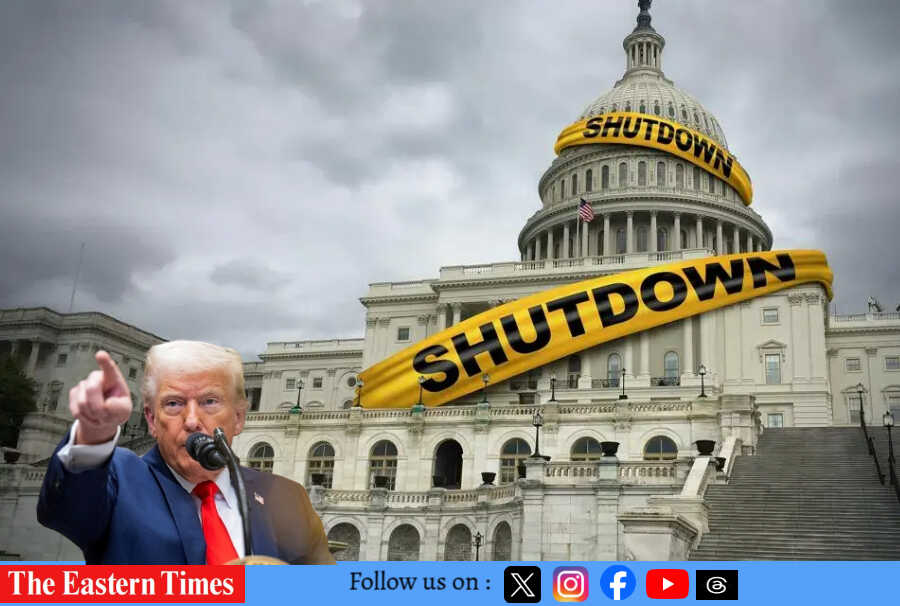US attacks Iran
Washington/Tehran, June 22 — In a dramatic escalation of the Middle East conflict, six U.S. B-2 Spirit stealth bombers carried out a series of precision airstrikes on Iran’s key nuclear facilities late Saturday night. The coordinated assault, conducted alongside Israeli forces, targeted the deeply buried sites at Fordow, Natanz, and Isfahan — facilities central to Iran’s uranium enrichment program.
According to U.S. defense sources, the operation employed GBU-57A/B “Massive Ordnance Penetrator” bombs, capable of destroying fortified underground structures. Fordow, located beneath a mountain near Qom, was hit with at least a dozen bunker-busting bombs, reportedly leaving the site severely damaged. Natanz and Isfahan were also struck using a mix of these bombs and Tomahawk cruise missiles. Former President Donald Trump, speaking shortly after the strikes, claimed Fordow had been “totally obliterated.”
The operation was carried out in conjunction with Israel’s ongoing military campaign, dubbed Operation Rising Lion, which aims to dismantle Iran’s missile and nuclear infrastructure following a wave of Iranian drone and missile attacks earlier this month. Israeli Prime Minister Benjamin Netanyahu called the joint U.S.-Israeli effort “historic,” asserting it had dealt a crippling blow to Iran’s nuclear ambitions.
Iranian authorities confirmed the strikes but downplayed the damage. The Atomic Energy Organization of Iran stated that key materials had been moved in advance, minimizing the impact, and confirmed no radioactive leaks had occurred. Iranian President Ebrahim Raisi condemned the U.S. action as “unprovoked aggression” and vowed retaliation “at a time and place of our choosing.”
The international response has been swift and tense. UN Secretary-General António Guterres called for immediate restraint, warning that further escalation could plunge the region into a broader conflict. European Union leaders echoed the call for de-escalation and urged a return to diplomatic talks.
In the United States, the strikes sparked a sharp political divide. Republican lawmakers praised the mission as a bold move to neutralize a growing threat, while Democratic leaders criticized the administration for acting without Congressional authorization and warned of potential long-term consequences for regional stability.
Experts say the attack could severely delay Iran’s nuclear capabilities but may also trigger a surge in covert development. The coming days will be critical, with global powers watching closely to see whether this marks the start of a prolonged conflict or a high-stakes push back to diplomacy.
Highlights:
The US deployed six B-2 bombers to strike Iran’s nuclear sites in a major escalation.
Targets included Fordow, Natanz, and Isfahan — key uranium enrichment facilities.
Bunker-buster bombs (GBU-57A/B) were used to hit underground complexes.
The Fordow facility was reportedly “obliterated,” according to Donald Trump.
Strikes were coordinated with Israel’s Operation Rising Lion.
Iran confirmed the attacks but claimed minimal damage and no radiation leak.
Iran vowed “decisive retaliation,” calling the strikes an act of war.
The UN and EU urged de-escalation, warning of regional war risks.
US political reaction was divided; Republicans supported the strikes, while Democrats raised legal concerns.
Experts warned the attacks may delay but not eliminate Iran’s nuclear program.
Connect with us through social media
Facebook:
 https://www.facebook.com/profile.php?id=61577015427068
https://www.facebook.com/profile.php?id=61577015427068X (Twitter):
 https://x.com/times_555
https://x.com/times_555Instagram:
 https://www.instagram.com/the_eastern_times_/?next=%2F&hl=en
https://www.instagram.com/the_eastern_times_/?next=%2F&hl=enMail (Email):
 contact.theeasterntimes@gmail.com
contact.theeasterntimes@gmail.com















Leave a Reply